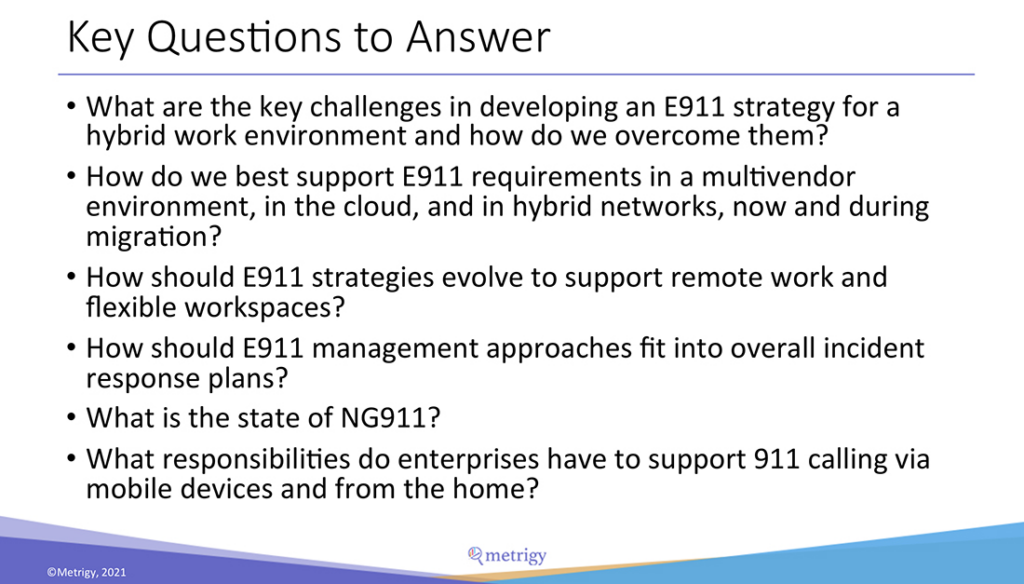As principal UC engineer for Alaska Airlines, Dan Olson faces a number of E911 challenges. “We have a lot of old phone systems with limited DID numbers at our remote Alaska airports,” he said. “To address that, we are moving to a more centralized SIP service so employees can get to the right emergency services.”
Alaska Airlines faces other E911 issues at Seattle-Tacoma International Airport, which is located in the City of Seattle although the Port of Seattle provides emergency services. “We need to be sure alerts are sent to the right place, along with the right location in our two terminals, and campus buildings,” Olson said. “We are 1.5 years into our most recent E911 implementation, and have had good success with the system.”
Responding to Olson at an Enterprise Connect session, “Creating Safer Workplaces: E911 and Beyond,” Jason Taddeo, senior solutions architect, Presidio, said it’s important to understand custom environments when implementing an E911 solution – especially in light of changing federal, state and local regulations. “There are a lot of moving parts in a solution to make workplaces safer and more secure for everyone.”
Brian Kinne, VP, RFT, emphasized that seconds count in emergencies. “You want employees facing a situation to be able to push a button immediately, rather than walking to a phone or yelling out the window,” he said. “So, you must provide the resources to start the chain of communication to notify the response teams.”
That’s why E911 requires a methodical approach, said Joe Rittenhouse, president of business development, Converged Technology Professionals, Inc. “With a large campus or multisite environment, you should break things down into a phased approach,” he said. “Decide what should come first and make investments to mitigate any gaps in your current process.”

Addressing hybrid work challenges
Today’s work-from-anywhere environment has made managing E911 call routing and location response even more challenging, according to panelists in another Enterprise Connect session, “Meeting E911 Requirements in the Age of Hybrid Work.”
After all, E911 calls must reach the proper public safety answering point, with the correct associated location, whether the call is made from home or office. In addition, new legislation, including Kari’s Law and RAY BAUM’s Act, mandate direct dial to 911, notifications to security personnel, and sharing of granular location information to identify a caller’s location.
Irwin Lazar, president and principal analyst, Metrigy, asked panelists to address issues like how best to support E911 in a multivendor hybrid work environment. Josh Burch, director of product management, Intrado, recommended an assessment of the network and devices when planning an E911 implementation. “You might have teams working on laptops, softphones for sales people and desk phones for executives,” he said. “You need a solution that covers them all, so put together a checklist first.”
Mark Fletcher, VP public safety solutions, 911inform, said location detection is the most critical piece of the E911 solution. “PBXs can route 911 calls, but you have to understand where a device is situated,” he said. “For instance, someone on the road might need to be routed to an emergency communications center in California or in Washington, DC.”
Looking ahead, Fletcher said next generation 911 (NG911) solutions can address current challenges, such a phone number that can exist in multiple locations. “NG911 can use the mac address of the device and other factors to determine where the call originated and route it appropriately,” he said.
Regardless of the solution, attorney Martha Buyer emphasized the importance of educating employees about emergency response procedures, as well as following applicable federal, state and local laws and regulations. After all, E911 is all about people responding to people in an emergency, with technology serving as a facilitator in that process.
